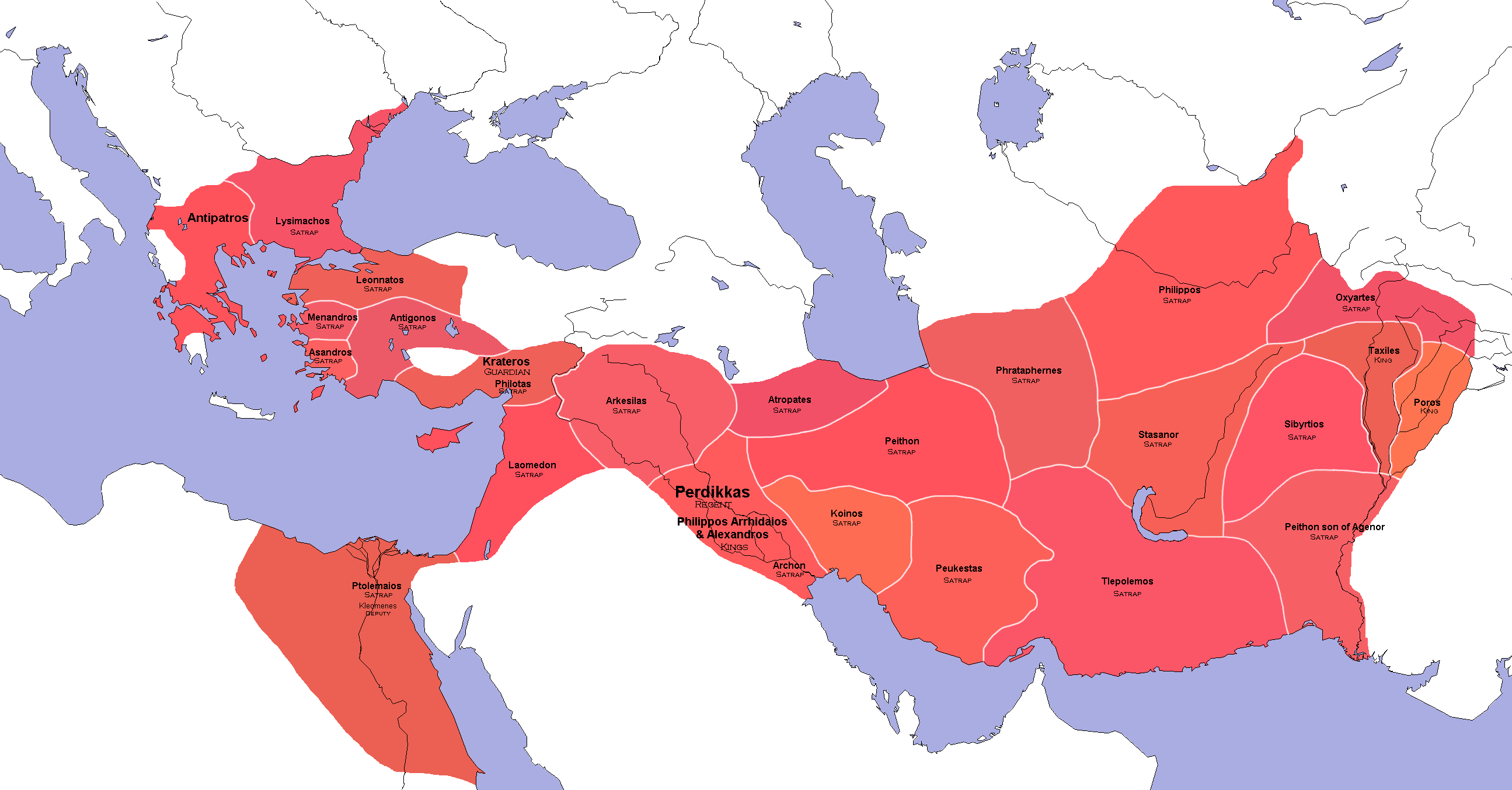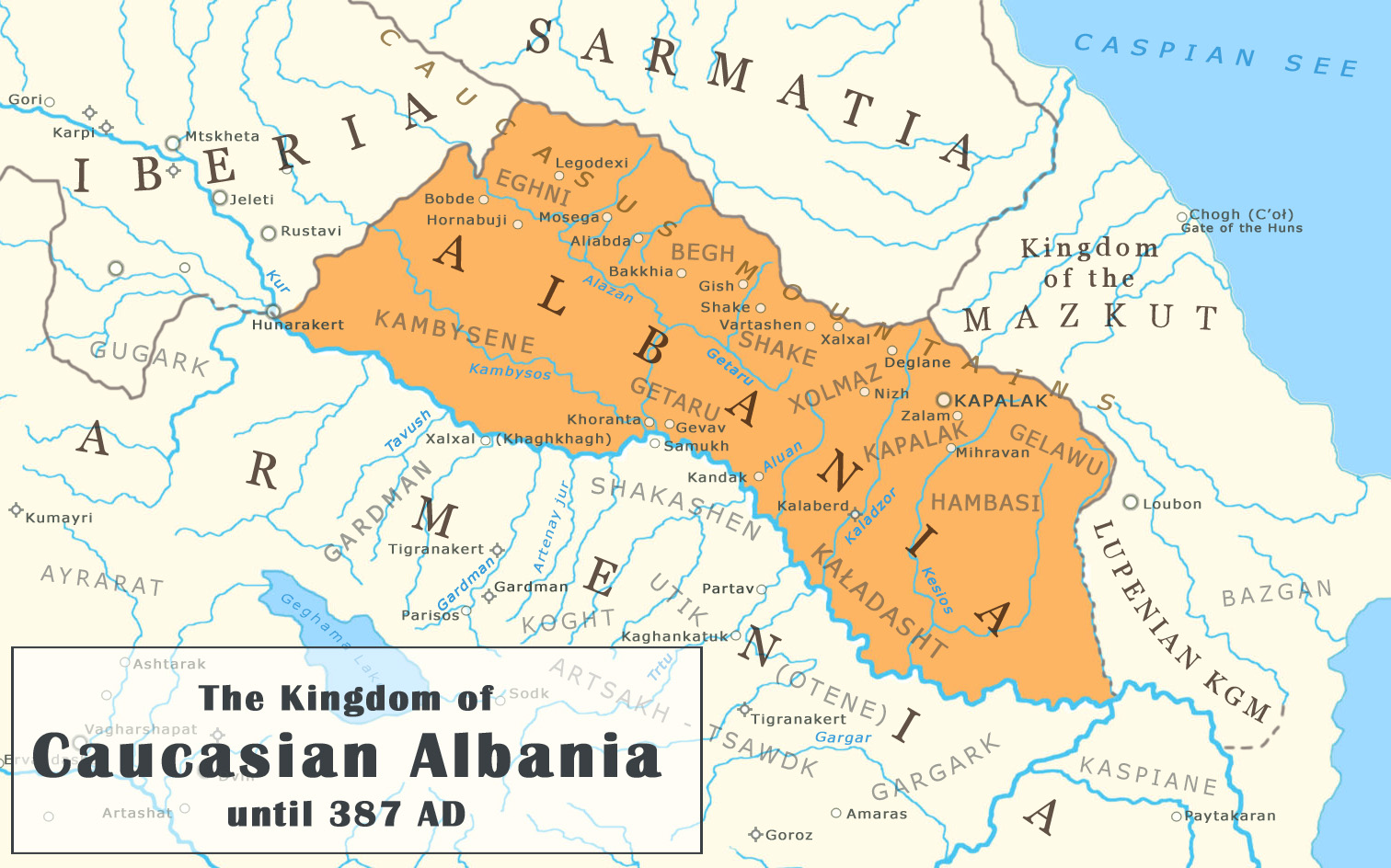|
Atropatene
Atropatene (; ; ), also known as Media Atropatene, was an ancient Iranian peoples, Iranian kingdom established in by the Persian satrap Atropates (). The kingdom, centered in present-day Azerbaijan (Iran), Azerbaijan region in northwestern Iran, was ruled by Atropates' descendants until the early 1st-century AD, when the Parthian Arsacid dynasty supplanted them. It was conquered by the Sasanians in 226, and turned into a province governed by a ''marzban'' ("margrave"). Atropatene was the only Iranian region to remain under Zoroastrian authority from the Achaemenids to the Muslim conquest of Persia, Arab conquest without interruption, aside from being briefly ruled by the Macedonia (ancient kingdom), Macedonian king Alexander the Great (). The Old Persian name Ātṛpātakāna is the direct ancestor of the name of the historic Azerbaijan (Iran), Azerbaijan region in Iran. Name According to Strabo, the name of Atropatene derived from the name of Atropates, the commander of the ... [...More Info...] [...Related Items...] OR: [Wikipedia] [Google] [Baidu] |
Ganzak
Ganzak ( ''Ganzak'', ''Gazaka'', Latin language, Latin: ''Gaza'', ''Gazaca'', ''Ganzaga'', Arabic language, Arabic: جانزاك ''Janzaq'', جازنا ''Jazna'', ''Gandzak''), is an ancient town founded in northwestern Iran. The city stood somewhere south of Lake Urmia, and it has been postulated that the Persian people, Persian nobleman Atropates chose the city as his capital. The exact location, according to Vladimir Minorsky, Minorsky, Schippmann, and Mary Boyce, Boyce, is identified as being the ruins (37.011555°N, 46.193187°E) at Leylan, Malekan County in the Miandoab plain.M. BoyceGanzak in Encyclopaedia Iranica, vol. 10, 2001. Etymology The word ''ganzak'' means "treasury", and is of Median language, Median origin (''wikt:Reconstruction:Old Median/ganǰəm, ganǰəm''). It was adopted into Persian language, Persian by the Achaemenid Empire, as the name is related to the Persian word for "treasury", گنج ''ganj''. History Ganzak was built by the Achaemenids and w ... [...More Info...] [...Related Items...] OR: [Wikipedia] [Google] [Baidu] |
Atropates
Atropates ( and Middle Persian ; ; – after 321 BC) was a Persian nobleman who served Darius III, then Alexander the Great, and eventually founded an independent kingdom and dynasty that was named after him. Diodorus (18.4) refers to him as (), while Quintus Curtius (8.3.17) erroneously names him 'Arsaces'. Biography Towards the end of the Achaemenid Empire, Atropates was governor (''satrap'') of the Achaemenid province of Media. He was close to the royal family, and was possibly of Achaemenid descent himself. In the decisive Battle of Gaugamela (October 331 BCE) between Darius and Alexander, Atropates commanded the Achaemenid troops of Media and Sacasene. Following his defeat in that battle, Darius fled to the Median capital of Ecbatana, where Atropates gave him hospitality. Darius attempted to raise a new army but was forced to flee Ecbatana in June 330 BCE. After Darius' death a month later at the hands of Bessus, Atropates surrendered to Alexander. Alexander initia ... [...More Info...] [...Related Items...] OR: [Wikipedia] [Google] [Baidu] |
Azerbaijan (Iran)
Azerbaijan or Azarbaijan (, , ), also known as Iranian Azerbaijan, is a historical region in northwestern Iran that borders Iraq and Turkey to the west and Armenia, Azerbaijan, and the Azerbaijani exclave of the Nakhchivan Autonomous Republic to the north. Iranian Azerbaijan includes three northwestern Iranian provinces: West Azerbaijan province, West Azerbaijan, East Azerbaijan province, East Azerbaijan and Ardabil province, Ardabil. Some authors also include Zanjan province, Zanjan in this list, some in a geographical sense, others only culturally (due to the predominance of the Azeri Turkic population there). The region is mostly populated by Iranian Azerbaijanis, Azerbaijanis, with minority populations of Kurds, Armenians, Tat people (Iran), Tats, Talysh people, Talysh, Assyrian people, Assyrians and Persians. Iranian Azerbaijan is the land Azerbaijan naming controversy, originally and historically called Azerbaijan; the Azerbaijani-populated Republic of Azerbaijan appr ... [...More Info...] [...Related Items...] OR: [Wikipedia] [Google] [Baidu] |
Arsacid Dynasty
The Parthian Empire (), also known as the Arsacid Empire (), was a major Iranian political and cultural power centered in ancient Iran from 247 BC to 224 AD. Its latter name comes from its founder, Arsaces I, who led the Parni tribe in conquering the region of Parthia in Iran's northeast, then a satrapy (province) under Andragoras, who was rebelling against the Seleucid Empire. Mithridates I ( BC) greatly expanded the empire by seizing Media and Mesopotamia from the Seleucids. At its height, the Parthian Empire stretched from the northern reaches of the Euphrates, in what is now central-eastern Turkey, to present-day Afghanistan and western Pakistan. The empire, located on the Silk Road trade route between the Roman Empire in the Mediterranean Basin and the Han dynasty of China, became a center of trade and commerce. The Parthians largely adopted the art, architecture, religious beliefs, and regalia of their culturally heterogeneous empire, which encompassed Pe ... [...More Info...] [...Related Items...] OR: [Wikipedia] [Google] [Baidu] |
Ecbatana
Ecbatana () was an ancient city, the capital of the Median kingdom, and the first capital in History of Iran, Iranian history. It later became the summer capital of the Achaemenid Empire, Achaemenid and Parthian Empire, Parthian empires.Nardo, Don. "Ecbatana." ''The Greenhaven Encyclopedia of Ancient Mesopotamia'', edited by Robert B. Kebric, Greenhaven Press, 2007, pp. 97-98. ''Gale In Context: World History'', link.gale.com/apps/doc/CX3205100129/WHIC?u=wylrc_uwyoming&sid=summon&xid=e9682d3c. Accessed 20 Nov. 2022. It was also an important city during the Seleucid Empire, Seleucid and Sasanian Empire, Sasanian empires. It is believed that Ecbatana is located in the Zagros Mountains, the east of central Mesopotamia, on Hagmatana Hill (Tappe-ye Hagmatāna). Ecbatana's strategic location and resources probably made it a popular site even before the 1st millennium BC. Along with Athens in Greece, Rome in Italy and Susa in Iran, Ecbatana is one of the few ancient cities in the world th ... [...More Info...] [...Related Items...] OR: [Wikipedia] [Google] [Baidu] |
Caucasian Albanians
Caucasian Albania is a modern exonym for a former state located in ancient times in the Caucasus, mostly in what is now Azerbaijan (where both of its capitals were located). The modern endonyms for the area are ''Aghwank'' and ''Aluank'', among the Udi people, who regard themselves as descended from the inhabitants of Caucasian Albania. However, its original endonym is unknown. The name Albania is derived from the Ancient Greek name and Latin , created from Greek sources that incorrectly translated the Armenian language. The prefix "Caucasian" is used to avoid confusion with Albania in the Balkans, which has no geographical or historical connections to Caucasian Albania. Little is known of the region's prehistory, including the origins of Caucasian Albania as a geographical and/or ethnolinguistic concept. In the 1st century BC and the 1st century AD, the area south of the Greater Caucasus and north of the Lesser Caucasus was divided between Caucasian Albania in the east, C ... [...More Info...] [...Related Items...] OR: [Wikipedia] [Google] [Baidu] |
Median Language
Median (also Medean or Medic) is an extinct Iranian language which was spoken by the now extinct ancient Medes. It belongs to the Northwestern branch of the Iranian language family, which includes many other much more recently attested and different languages such as Kurdish, Old Azeri, Talysh, Gilaki, Mazandarani, Zaza–Gorani and Baluchi. Attestation Median is attested only by numerous loanwords in Old Persian. Nothing is known of its grammar, “but it shares important phonological isoglosses with Avestan, rather than Old Persian. Under the short lived period of Median rule … Median must to some extent have been the official Iranian language in western Iran”. No documents dating to Median times have been preserved, and it is not known what script these texts might have been in. So far only one inscription of pre- Achaemenid times (a bronze plaque) has been found on the territory of Media from the time Media and Persia were under the control of the Neo-As ... [...More Info...] [...Related Items...] OR: [Wikipedia] [Google] [Baidu] |
Medes
The Medes were an Iron Age Iranian peoples, Iranian people who spoke the Median language and who inhabited an area known as Media (region), Media between western Iran, western and northern Iran. Around the 11th century BC, they occupied the mountainous region of northwestern Iran and the northeastern and eastern region of Mesopotamia in the vicinity of Ecbatana (present-day Hamadan). Their consolidation in Iran is believed to have occurred during the 8th century BC. In the 7th century BC, all of western Iran and some other territories were under Median rule, but their precise geographic extent remains unknown. Although widely recognized as playing an important role in the history of the ancient Near East, the Medes left no written records to reconstruct their history. Knowledge of the Medes comes only from foreign sources such as the Assyrians, Babylonians, Armenians and Ancient Greece, Greeks, as well as a few Iranian archaeological sites, which are believed to have been occu ... [...More Info...] [...Related Items...] OR: [Wikipedia] [Google] [Baidu] |
Sasanians
The Sasanian Empire (), officially Eranshahr ( , "Empire of the Iranians"), was an Iranian empire that was founded and ruled by the House of Sasan from 224 to 651. Enduring for over four centuries, the length of the Sasanian dynasty's reign over ancient Iran was second only to the directly preceding Arsacid dynasty of Parthia. Founded by Ardashir I, whose rise coincided with the decline of Arsacid influence in the face of both internal and external strife, the House of Sasan was highly determined to restore the legacy of the Achaemenid Empire by expanding and consolidating the Iranian nation's dominions. Most notably, after defeating Artabanus IV of Parthia during the Battle of Hormozdgan in 224, it began competing far more zealously with the neighbouring Roman Empire than the Arsacids had, thus sparking a new phase of the Roman–Iranian Wars. This effort by Ardashir's dynasty ultimately re-established Iran as a major power of late antiquity.Norman A. Stillman ''The Jew ... [...More Info...] [...Related Items...] OR: [Wikipedia] [Google] [Baidu] |
Achaemenid Empire
The Achaemenid Empire or Achaemenian Empire, also known as the Persian Empire or First Persian Empire (; , , ), was an Iranian peoples, Iranian empire founded by Cyrus the Great of the Achaemenid dynasty in 550 BC. Based in modern-day Iran, it was the List of largest empires#Timeline of largest empires to date, largest empire by that point in history, spanning a total of . The empire spanned from the Balkans and ancient Egypt, Egypt in the west, most of West Asia, the majority of Central Asia to the northeast, and the Indus Basin, Indus Valley of South Asia to the southeast. Around the 7th century BC, the region of Persis in the southwestern portion of the Iranian plateau was settled by the Persians. From Persis, Cyrus rose and defeated the Medes, Median Empire as well as Lydia and the Neo-Babylonian Empire, marking the establishment of a new imperial polity under the Achaemenid dynasty. In the modern era, the Achaemenid Empire has been recognised for its imposition of a succ ... [...More Info...] [...Related Items...] OR: [Wikipedia] [Google] [Baidu] |
Transcaucasia 2nd BC
The South Caucasus, also known as Transcaucasia or the Transcaucasus, is a geographical region on the border of Eastern Europe and West Asia, straddling the southern Caucasus Mountains. The South Caucasus roughly corresponds to modern Armenia, Georgia, and Azerbaijan, which are sometimes collectively known as the Caucasian States. The total area of these countries measures about . The South Caucasus and the North Caucasus together comprise the larger Caucasus geographical region that divides Eurasia. The South Caucasus is a dynamic and complex region where the three countries have pursued distinct geopolitical pathways. Geography The South Caucasus spans the southern portion of the Caucasus Mountains and their lowlands, straddling the border between the continents of Europe and Asia, and extending southwards from the southern part of the Main Caucasian Range of southwestern Russia to the Turkish and Armenian borders, and from the Black Sea in the west to the Caspian Sea coast ... [...More Info...] [...Related Items...] OR: [Wikipedia] [Google] [Baidu] |









